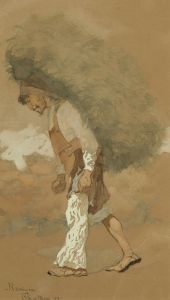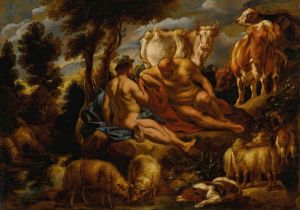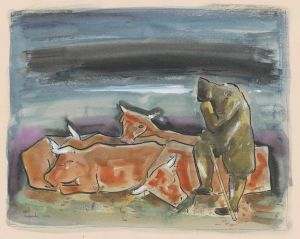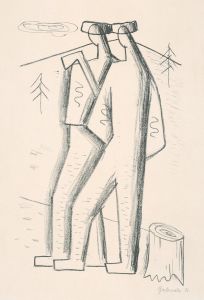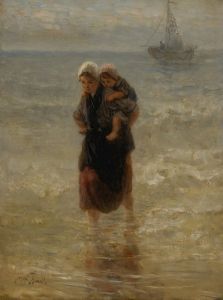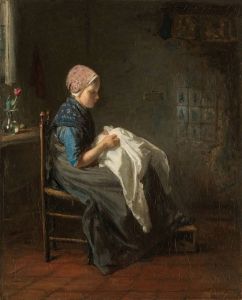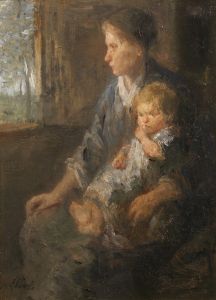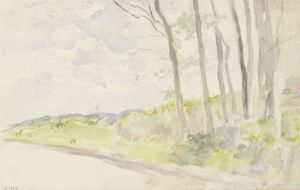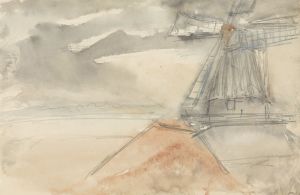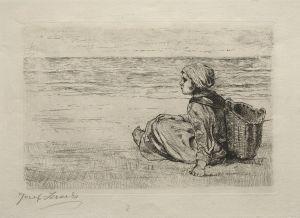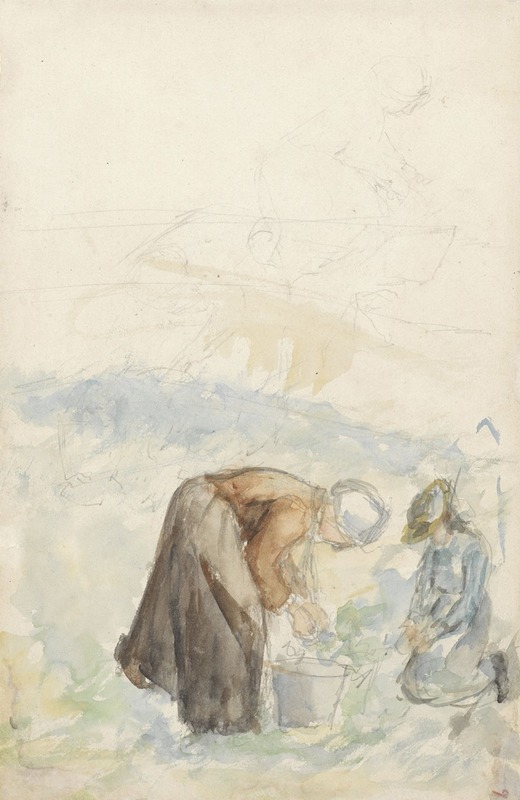
Twee op het land werkende vrouwen
A hand-painted replica of Jozef Israëls’s masterpiece Twee op het land werkende vrouwen, meticulously crafted by professional artists to capture the true essence of the original. Each piece is created with museum-quality canvas and rare mineral pigments, carefully painted by experienced artists with delicate brushstrokes and rich, layered colors to perfectly recreate the texture of the original artwork. Unlike machine-printed reproductions, this hand-painted version brings the painting to life, infused with the artist’s emotions and skill in every stroke. Whether for personal collection or home decoration, it instantly elevates the artistic atmosphere of any space.
Jozef Israëls, a prominent Dutch painter of the 19th century, created the artwork "Twee op het land werkende vrouwen" (translated as "Two Women Working in the Fields"). Israëls was a leading figure of the Hague School, a group of artists known for their realistic depictions of rural life and the Dutch landscape. His works often focused on the lives of ordinary people, particularly peasants and fishermen, capturing their daily struggles and quiet dignity.
"Twee op het land werkende vrouwen" is a characteristic example of Israëls' style and thematic focus. The painting portrays two women engaged in agricultural labor, a subject that reflects the artist's interest in the hardships and resilience of rural communities. The muted color palette and soft brushwork are typical of Israëls' approach, emphasizing the somber yet serene atmosphere of the scene. The figures are depicted with a sense of realism and empathy, highlighting their connection to the land and their shared toil.
Israëls was influenced by the French Realist movement, particularly the works of Jean-François Millet, who similarly depicted rural laborers with a sense of dignity and humanity. This influence is evident in "Twee op het land werkende vrouwen," where the focus is on the universal themes of labor and perseverance rather than individual identity or narrative.
The exact date of the painting's creation is not widely documented, but it aligns with Israëls' broader body of work, which spanned the mid to late 19th century. During this period, he gained international recognition for his ability to convey emotion and atmosphere through his depictions of everyday life.
"Twee op het land werkende vrouwen" is housed in a private collection or museum, though specific details about its current location are not readily available. The painting continues to be appreciated as an example of Israëls' mastery in portraying the human condition and his contribution to the Hague School's legacy.
Jozef Israëls remains an important figure in Dutch art history, and works like "Twee op het land werkende vrouwen" exemplify his commitment to realism and his deep empathy for his subjects.





